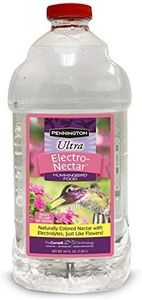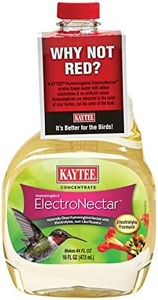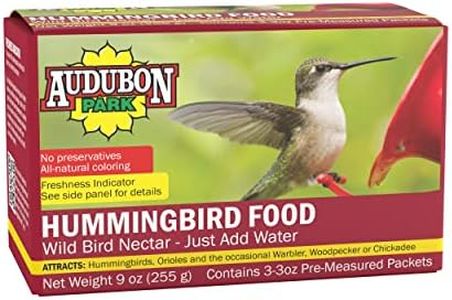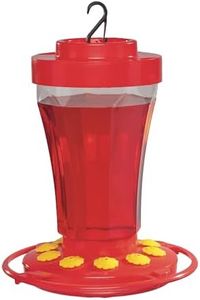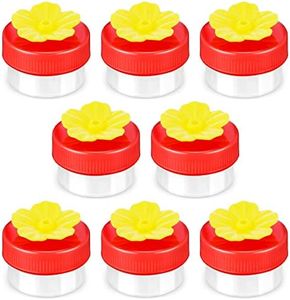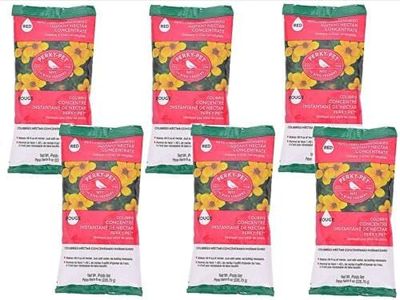We Use CookiesWe use cookies to enhance the security, performance,
functionality and for analytical and promotional activities. By continuing to browse this site you
are agreeing to our privacy policy
10 Best Hummingbird Food
From leading brands and best sellers available on the web.Buying Guide for the Best Hummingbird Food
Choosing the right hummingbird food is important because it directly affects the health, energy, and well-being of these beautiful birds. When selecting a hummingbird food, it's crucial to ensure it closely mimics the natural nectar they find in the wild. Making an informed choice will help attract hummingbirds to your garden and support their nutritional needs. To do this, focus on a few key characteristics of quality hummingbird food, always considering both the ingredients and how they match your local hummingbird population's needs.IngredientsIngredients in hummingbird food are critical since these tiny birds have specific dietary requirements. The main component should be sucrose, as it's the primary sugar found in flower nectar. Avoid products with added dyes, preservatives, or artificial flavors, as these are unnecessary and might harm hummingbirds. When you look for hummingbird food, pure and simple ingredient lists—usually just cane sugar and water—are ideal. If you're making it at home, use only white granulated sugar mixed with water, never honey or alternative sweeteners. Always compare the ingredient list to ensure you're providing the healthiest option.
Sugar-to-Water RatioThe sugar-to-water ratio describes how concentrated the nectar is by showing how much sugar is dissolved in a certain amount of water. This is important because a mixture that's too sugary can make the birds sick, while too little sugar may leave them undernourished. The standard and safest ratio is 1 part white sugar to 4 parts water. Following this ratio ensures the mixture is close to what hummingbirds naturally consume. If you're in a particularly hot climate, you shouldn't make the mixture more concentrated; always stick to the standard to meet their nutritional needs without causing harm.
Presence of Artificial DyeSome commercial hummingbird foods contain red dye, under the belief that red attracts the birds. However, dye is not necessary and may even be harmful over time. Hummingbirds are attracted to red feeders, not red food. When choosing hummingbird food, always opt for clear, dye-free solutions. This choice is especially important if you notice the food is bright pink or red—these should be avoided. You can safely draw hummingbirds by using a red-colored feeder instead.
Form: Liquid vs. PowderHummingbird food can be found in both liquid and powder forms, and each has its pros and cons. Liquid nectar is convenient and ready to use, but it may have a shorter shelf life. Powdered nectar requires mixing with water but often lasts longer in storage. If you want a quick and easy setup, liquid is a good choice, but if you prefer buying larger quantities to use over time, powder might suit you better. Pick the form that best matches your feeding routine and how frequently you'll be refreshing the nectar in your feeders.
Ease of PreparationEase of preparation refers to how quickly and simply you can get the food ready for the feeders. Some products just require pouring, while others need mixing and sometimes even boiling. If you want the simplest option, pre-mixed liquids are the easiest, but if you don't mind a little kitchen time, powders or even homemade recipes can be simple and more cost-effective. Think about how much time and effort you're willing to invest, as regular cleaning and refilling of feeders is necessary to keep the hummingbirds safe.
